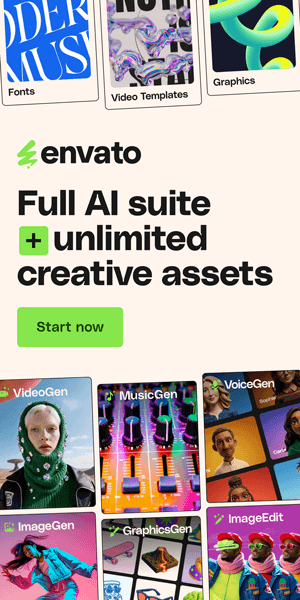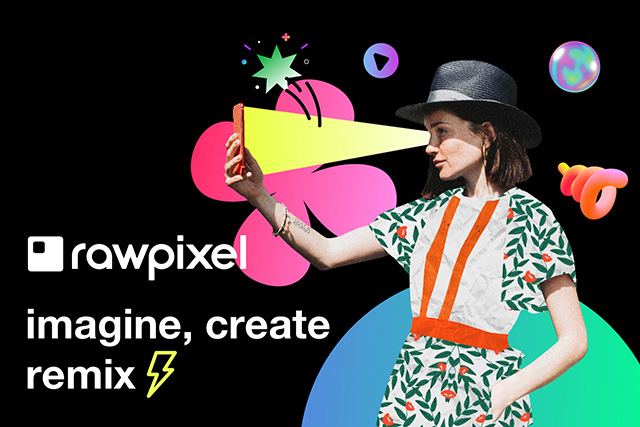Clipart for Designers: A World of Possibilities at Your Fingertips
In the realm of graphic design, clipart stands as an invaluable tool, offering a vast array of possibilities to enhance visual communication and storytelling. From its humble beginnings as a collection of pre-drawn images, clipart has evolved into a versatile resource that empowers designers to create impactful and engaging designs. Whether crafting presentations, websites, social media posts, or print materials, clipart provides designers with a treasure trove of visual elements to elevate their work.
Clipart's significance extends far beyond its ease of use and accessibility. It serves as a cost-effective solution for designers, allowing them to access a diverse range of images without incurring significant expenses. Furthermore, clipart offers a plethora of customization options, enabling designers to personalize and adapt images to suit their specific needs. This versatility makes clipart an indispensable asset for designers of all levels of experience and expertise.
The benefits of clipart extend to the realm of time management. By utilizing clipart, designers can streamline their workflow and dedicate more time to the creative aspects of their projects. Instead of spending precious hours crafting individual illustrations, designers can seamlessly integrate clipart into their designs, saving valuable time and energy.
Moreover, clipart plays a crucial role in enhancing visual storytelling. By incorporating clipart into their designs, designers can effectively communicate ideas, evoke emotions, and capture the essence of their message. Clipart serves as a visual language that transcends the boundaries of text, allowing designers to engage their audience on a deeper level.
II. The Benefits of Clipart for Designers
Clipart offers a multitude of advantages for designers, making it an essential tool in their arsenal. Let's delve into the key benefits that make clipart a valuable addition to any designer's toolkit:
1. Ease of Use and Accessibility
Clipart stands out for its remarkable simplicity and ease of use. Unlike creating original illustrations, which can be time-consuming and require a certain level of artistic skill, clipart provides designers with readily available images that can be easily inserted into their designs. This user-friendly nature makes clipart a valuable resource for both experienced designers and those just starting out.
2. Cost-Effectiveness
Clipart offers a cost-effective solution for designers, especially those working on tight budgets. Unlike hiring an illustrator or purchasing stock photos, clipart provides a vast collection of images at a fraction of the cost. This affordability makes clipart an attractive option for designers seeking to enhance their designs without breaking the bank.
3. Variety and Customization Options
Clipart caters to a wide range of design styles and projects, offering a diverse selection of images spanning various themes, subjects, and artistic styles. Designers can choose from a variety of clipart categories, including icons, symbols, people, objects, and scenes. Additionally, many clipart images are available in various file formats, such as vector graphics (SVG) and raster images (PNG, JPG), allowing for further customization and scalability.
4. Time-Saving Advantages
Clipart's pre-drawn nature significantly reduces the time required to create visuals for design projects. Instead of spending hours sketching, illustrating, or searching for suitable images, designers can quickly locate and integrate clipart into their designs, streamlining their workflow and freeing up time for more creative endeavors.
5. Enhance Visual Storytelling
Clipart plays a pivotal role in enhancing visual storytelling by providing designers with a powerful tool to communicate ideas, evoke emotions, and convey messages effectively. Through the strategic use of clipart, designers can create visually engaging narratives that resonate with their audience and leave a lasting impression.
III. Types of Clipart for Designers
The world of clipart encompasses a diverse range of image types, each offering unique benefits and applications for designers. Let's explore the various categories of clipart and their suitability for different design projects:
1. Vector Clipart: Scalable and Editable
Vector clipart stands out for its ability to be scaled infinitely without losing quality. This makes vector clipart ideal for situations where images need to be resized for various formats, such as print materials, web designs, and presentations. Additionally, vector clipart offers superior editing capabilities, allowing designers to modify colors, shapes, and details with ease.
2. Raster Clipart: Suitable for Web and Print
Raster clipart comprises images composed of fixed-size pixels, making them well-suited for web and print applications. Raster clipart is typically available in formats like PNG and JPG, which are widely supported by web browsers and printing software. However, due to its pixel-based nature, raster clipart may experience quality loss when resized significantly.
3. 3D Clipart: Adding Depth and Dimension
3D clipart brings a unique dimension to designs by introducing depth and realism. Designers can utilize 3D clipart to create visually impactful presentations, product mockups, and illustrations, adding a touch of sophistication and professionalism to their work.
4. Animated Clipart: Engaging and Dynamic
Animated clipart brings a dynamic element to designs, capturing attention and adding a touch of interactivity. Designers can incorporate animated clipart into presentations, websites, and social media posts to enhance engagement and convey messages in a more captivating way.
5. Thematic Clipart: Focused on Specific Topics or Industries
Thematic clipart caters to specific industries or themes, providing a focused collection of images relevant to a particular niche. Designers can find thematic clipart tailored to various fields, such as healthcare, education, technology, and business, ensuring the visual elements align with the project's context.
IV. Using Clipart Effectively in Design: A Practical Guide to Visual Harmony
Clipart offers a treasure trove of visual elements, but effective integration requires careful consideration and strategic placement to ensure harmony and cohesion within the overall design. Let's explore a step-by-step guide to utilizing clipart effectively in design:
1. Choosing the Right Clipart for Your Project
The first step towards seamless clipart integration lies in selecting the most appropriate images for your project. Consider the overall style, tone, and message of your design. Choose clipart that aligns with the desired aesthetic and complements the project's theme. For instance, if you're creating a professional business presentation, opt for clipart with a modern and sleek style. Alternatively, if you're designing a children's book, choose playful and whimsical clipart that appeals to young readers.
2. Editing and Customizing Clipart
Most clipart offers editing capabilities, allowing designers to personalize and adapt images to suit their specific needs. Utilize image editing software to adjust colors, resize elements, and modify shapes to ensure seamless integration into your design layout. For instance, you can change the color of a clipart element to match your brand palette or modify the scale of an object to fit the desired dimensions of your design.
3. Incorporating Clipart into Your Design Layout
Once you've selected and customized your clipart, it's time to harmoniously incorporate it into your design layout. Consider the balance, placement, and negative space surrounding the clipart elements. Ensure that clipart doesn't overwhelm the design or compete with other visual elements. Use clipart strategically to enhance the overall composition and guide the viewer's eye through the design.
4. Maintaining Visual Consistency
Consistency is key to creating a cohesive and polished design. When using clipart, maintain consistency in style, tone, and color palette across all clipart elements. This consistency ensures that the clipart seamlessly integrates into the design without introducing visual distractions or jarring transitions.
5. Ensuring Copyright Compliance
Abide by copyright regulations when using clipart. Always check the licensing terms of the clipart source to ensure proper usage. If necessary, obtain the necessary permissions or purchase licenses to avoid copyright infringement. Respecting copyright laws protects your work and ensures ethical design practices.
By following these guidelines, designers can effectively utilize clipart to enhance their designs, creating visually compelling and impactful work that resonates with their audience.
V. Finding Clipart Resources for Designers: A Treasure Trove of Visual Gems
The vast world of clipart offers a plethora of resources, each catering to specific design needs and preferences. Let's explore a curated selection of clipart repositories that designers can tap into to enrich their creative endeavors:
1. Online Clipart Libraries: A Wealth of Free and Premium Clipart
Online clipart libraries serve as a treasure trove of visual gems, offering a diverse range of clipart categories, styles, and file formats. Some popular online clipart libraries include:
Freepik: A comprehensive library with a vast collection of free and premium clipart, icons, and illustrations.
Vectr: A vector graphics editor with a built-in clipart library and the ability to create and share custom clipart.
Pixabay: A renowned platform providing free images and vectors, including a substantial clipart collection.
Open Clipart: A community-driven repository of free clipart images and vector graphics.
2. Design Software Clipart Collections: Built-in Clipart for Easy Access
Many popular design software programs offer built-in clipart collections, providing a convenient source of high-quality images. For instance:
Adobe Illustrator: Illustrator's extensive library of vector clipart includes a variety of styles and themes.
Microsoft Office ClipArt: Microsoft Office applications, such as PowerPoint, Word, and Excel, provide a collection of clipart images.
GIMP: The GIMP image editing software offers a built-in library of clipart images and vectors.
Inkscape: The Inkscape vector graphics editor includes a clipart collection and the ability to create and export clipart.
3. Creative Commons Clipart Repositories: Free to Use and Adapt
Creative Commons clipart repositories offer a vast collection of high-quality images that are free to use, adapt, and share under specific licensing terms. Popular Creative Commons clipart repositories include:
Wikimedia Commons: A vast repository of media files, including clipart, licensed under Creative Commons licenses.
Noun Project: A community-driven platform providing free icons and symbols, including a collection of clipart-style graphics.
Public Domain Vector Images: A collection of public domain vector graphics, including clipart, for free use and modification.
Open Clipart Library: A community-driven repository of free clipart images and vector graphics under the Open Clipart License.
These diverse clipart resources provide designers with a wealth of options to enhance their designs, catering to various project needs and creative styles. Whether exploring online libraries, utilizing design software's built-in clipart collections, or tapping into Creative Commons repositories, designers can seamlessly integrate clipart into their work, creating visually compelling and impactful designs.
VI. Advanced Clipart Techniques for Designers: Unleashing the Full Potential of Clipart
Beyond the basic principles of clipart usage, designers can delve into advanced techniques to fully harness the potential of clipart and create truly exceptional designs. Let's explore some advanced clipart techniques that elevate design work to new heights:
1. Creating Custom Clipart Using Vector Graphics Software
Designers with vector graphics software skills can elevate their clipart repertoire by creating their own custom clipart elements. Vector graphics software, such as Adobe Illustrator or Inkscape, empower designers to draw, manipulate, and edit vector paths, enabling them to produce high-quality, scalable, and adaptable clipart.
2. Manipulating Clipart Using Image Editing Software
Image editing software, such as Adobe Photoshop or GIMP, provides a versatile toolkit for modifying and enhancing clipart elements. Designers can utilize image editing tools to adjust colors, apply filters, add effects, and combine clipart elements to create unique and personalized visuals.
3. Integrating Clipart into Animations and Multimedia Projects
Clipart finds its place not only in static designs but also in dynamic multimedia projects. By incorporating clipart into animations and interactive elements, designers can enhance storytelling and create engaging user experiences. Animation software, such as Adobe After Effects or Moho, allows designers to breathe life into clipart elements, adding motion, transitions, and interactive features.
4. Utilizing Clipart for Branding and Identity Design
Clipart can play a significant role in establishing a cohesive brand identity. By identifying and utilizing consistent clipart elements that align with the brand's visual style and personality, designers can create a recognizable and memorable brand presence across various touchpoints, from logos and marketing materials to websites and social media.
These advanced clipart techniques empower designers to transcend the boundaries of basic clipart usage and unlock a world of creative possibilities. By combining clipart with their artistic skills and technical expertise, designers can create unique, engaging, and impactful designs that elevate their work and leave a lasting impression.
VII. Conclusion: Clipart as a Cornerstone of Visual Communication
In the realm of visual communication, clipart stands as a cornerstone, offering a vast array of possibilities to enhance design storytelling and engagement. Its versatility, ease of use, and cost-effectiveness make it an indispensable tool for designers of all levels of experience. From creating impactful presentations to crafting captivating social media posts, clipart empowers designers to elevate their work and create visually compelling designs that resonate with their audience.
As we conclude our exploration of clipart's role in design, let's reiterate the key takeaways that reinforce its significance:
Clipart as a Creative Ally: Clipart serves as a valuable ally in the designer's toolkit, providing a readily available source of visual elements to enhance designs and streamline the creative process.
Visual Storytelling Enhancement: Clipart empowers designers to effectively communicate ideas, evoke emotions, and convey messages through the power of visual storytelling.
Diverse Clipart Options: The diverse range of clipart types, from vector clipart to 3D clipart, caters to a wide spectrum of design styles and project requirements.
Effective Clipart Integration: Strategic integration of clipart ensures visual harmony, consistency, and adherence to copyright regulations.
Advanced Clipart Techniques: Advanced clipart techniques, such as custom clipart creation and animation integration, unlock a world of creative possibilities.
Unleashing Design Potential: Clipart empowers designers to unleash their full creative potential, creating visually compelling and impactful designs that leave a lasting impression.
As designers continue to explore the vast world of clipart, they will discover a treasure trove of visual gems that enhance their work, elevate their storytelling, and captivate their audience. Clipart, in its diverse forms and applications, stands as an indispensable tool in the designer's toolkit, empowering them to create impactful and memorable designs that resonate with the world.
Related articles

In this blog post, we'll explore the benefits of using chicken clipart, discover the different types available, and learn how to use it effectively in your farm business marketing.

Dive into the enchanting world of Christmas clipart and discover a treasure trove of festive illustrations to adorn your holiday creations. This guide will help you unleash your creativity and spread Christmas cheer.

Handmade illustrations can add a unique and personalized touch to any graphic design project. Learn more about the benefits of using handmade illustrations and how to create your own.

In this article, we're going to explore a fantastic array of cartoon character designs that will spark your creative fire.
Tags
Subscribe
Join the Advise Graphics community and get exclusive design resources, tips, and updates delivered straight to your inbox.
Quick links
Copyright
© 2025 Advise Graphics. All rights reserved.
Cop© 2025 Advise Graphics. All rights reserved.











